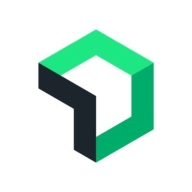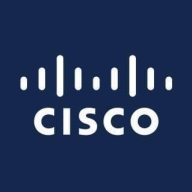

ThousandEyes and New Relic compete in the network and application monitoring category. ThousandEyes has the upper hand in network monitoring due to its path analysis and alerting systems, while New Relic is superior in application performance monitoring for real-time metrics and ease of use in DevOps environments.
Features: ThousandEyes offers comprehensive network monitoring with insights into connectivity quality and network issues. It features path analysis and alerting systems that integrate well with Cisco products. New Relic provides application performance monitoring with real-time performance statistics, application visibility, and ease of installation, making it ideal for DevOps.
Room for Improvement: ThousandEyes could enhance integration and usability, particularly in dashboard features and application monitoring. There's also potential in network device monitoring and analytics tools integration. New Relic needs improvement in data privacy controls and alerting mechanisms, with suggestions for better dashboard configurability and data detail retention.
Ease of Deployment and Customer Service: ThousandEyes is deployed in on-premises or hybrid cloud environments, praised for its responsive technical support. New Relic is predominantly used in public cloud settings, known for satisfying technical support. ThousandEyes offers deployment flexibility, whereas New Relic is favored for its cloud compatibility and scalability.
Pricing and ROI: ThousandEyes is seen as a high-investment solution with significant ROI through quick issue resolution and network performance improvements, though its costs can be challenging for smaller enterprises. New Relic's pricing is perceived as high but justified by its extensive feature set, providing ROI through enhanced productivity and reduced development times. Pricing models differ, with ThousandEyes targeting larger enterprises and New Relic offering flexible pricing options via cloud platforms.
There is a definite return on investment for New Relic, as we would not have invested in building its infrastructure if there were no returns.
One of the metrics that helped as a return on investment was the ability to detect issues faster and troubleshoot more quickly, which in turn helped to achieve a much better service level agreement with customers.
There has been a great ROI from using ThousandEyes, with significant time saved in troubleshooting as I can quickly pinpoint issues rather than spending time isolating them, alongside enhancing customer feedback and experience.
If I drop an email to them, they will respond quickly to my email.
Customer support from New Relic is very good, and we rarely need to create support tickets.
Issues that could be solved quickly sometimes take longer because they go around in circles.
We contacted the support team, and they resolved it within a couple of hours.
We currently use New Relic for tens of thousands of developers and hundreds of teams within our organization, and we have not encountered any scalability issues.
Scalability with ThousandEyes is straightforward as you don't really need to scale; it's designed to monitor multiple applications, accommodating 50 or 100 applications simultaneously.
From my experience, ThousandEyes has been stable up to 95%; I have not seen any stability issues.
ThousandEyes is not very stable; sometimes you have to reboot the servers to get actual results.
Using real-time data, if there are any malicious patterns or something happening, they can identify those.
Because of the pricing model, organizations have experienced uncontrolled costs and were not able to afford New Relic.
When there is a component or UI customization, having a smart AI agent to guide users on customizing New Relic would significantly ease the process.
Having a dedicated incident alert system for URL alerts would help manage noise and streamline operations, especially during patch upgrades.
An area where ThousandEyes can be improved is in providing more in-depth packet analysis; we've found instances where ThousandEyes indicates everything is okay, but it's actually not.
Introduction of a free version for end-users and enhancements to the user interface for easier navigation.
Considering the features New Relic offers, the pricing or cost setup has not been a blocker for our budget.
Using New Relic speeds up troubleshooting and resolution, giving us a clearer picture of where issues are, thus saving time and effort.
New Relic is very useful for teams that don't have much of a dedicated DevOps team but want to have observability for their platform, and it's an easy way to get started.
New Relic has positively impacted our organization by reducing errors, improving performance, and saving time.
I measure the 70% improvement in customer experience through customer tickets and feedback after resolving issues, where previously, users faced problems and limited time on the platform, and after using ThousandEyes, the user time reached up to five to six hours a day, even for teams possibly totaling 30 hours a day.
I find the most valuable feature of ThousandEyes is the ability to directly see the client's exact issue.
The best features ThousandEyes offers include monitoring page load times, assessing how long it takes for an application to load, checking for packet loss and jitter, and monitoring the routing path from the user to the server hosted in the cloud or on-premises.
| Product | Market Share (%) |
|---|---|
| ThousandEyes | 2.8% |
| New Relic | 1.7% |
| Other | 95.5% |


| Company Size | Count |
|---|---|
| Small Business | 65 |
| Midsize Enterprise | 50 |
| Large Enterprise | 65 |
| Company Size | Count |
|---|---|
| Small Business | 5 |
| Midsize Enterprise | 3 |
| Large Enterprise | 12 |
New Relic offers real-time application monitoring and insight into performance bottlenecks. Its customizable dashboards and APM integration provide efficient operational support, while server performance alerts ensure quick issue detection.
New Relic provides comprehensive monitoring of application performance, tracking bottlenecks across databases and front-end components. Users employ it for server and infrastructure monitoring, as well as analyzing key metrics such as CPU and memory usage. The solution's ability to integrate with tools like PagerDuty enhances incident management capabilities. However, users have expressed a need for improvements in query language simplicity, more detailed historical insights, and better mobile app monitoring support.
What are New Relic's most important features?In industries like e-commerce and financial services, New Relic supports application performance monitoring to enhance user experience and system reliability. Organizations leverage its insights for optimizing performance, particularly in server operations and infrastructure management. Its ability to monitor API failures through synthetic monitoring is crucial for maintaining high service levels.
ThousandEyes is a Network Intelligence platform that delivers visibility into every network an organization relies on, whether public or private. ThousandEyes enables users to optimize application delivery, end-user experience and ongoing infrastructure investments.
With cloud, enterprises can innovate much faster, but the growing number of cloud and SaaS applications means that more apps are being delivered over the Internet. This increases dependence on the Internet, a public “best effort” network, and other third-party infrastructures, substantially reducing the ability of IT teams to predict, visualize and control operational behavior. This results in a chaotic and unmanageable IT environment, making issue resolution a time-consuming ordeal, potentially impacting reputation and revenue. ThousandEyes has innovated an approach based on an unmatched distribution of smart agents across the Internet and enterprise, providing visibility all the way to the end user. ThousandEyes gathers and analyzes massive volumes of Network Intelligence data from all of these vantage points, enabling organizations to solve even their most obscure performance problems in minutes. By using ThousandEyes in the planning and testing phases of cloud adoption, customers can also strategically identify and fix underlying problems before production deployment of business-critical applications.
The ThousandEyes solution is ubiquitous across industry sectors, and since launching in mid-2013, customers have come from a diverse set of industry sectors, which include Silicon Valley technology companies, financial services, healthcare, pharmaceuticals, retail, manufacturing and education.
We monitor all Network Monitoring Software reviews to prevent fraudulent reviews and keep review quality high. We do not post reviews by company employees or direct competitors. We validate each review for authenticity via cross-reference with LinkedIn, and personal follow-up with the reviewer when necessary.